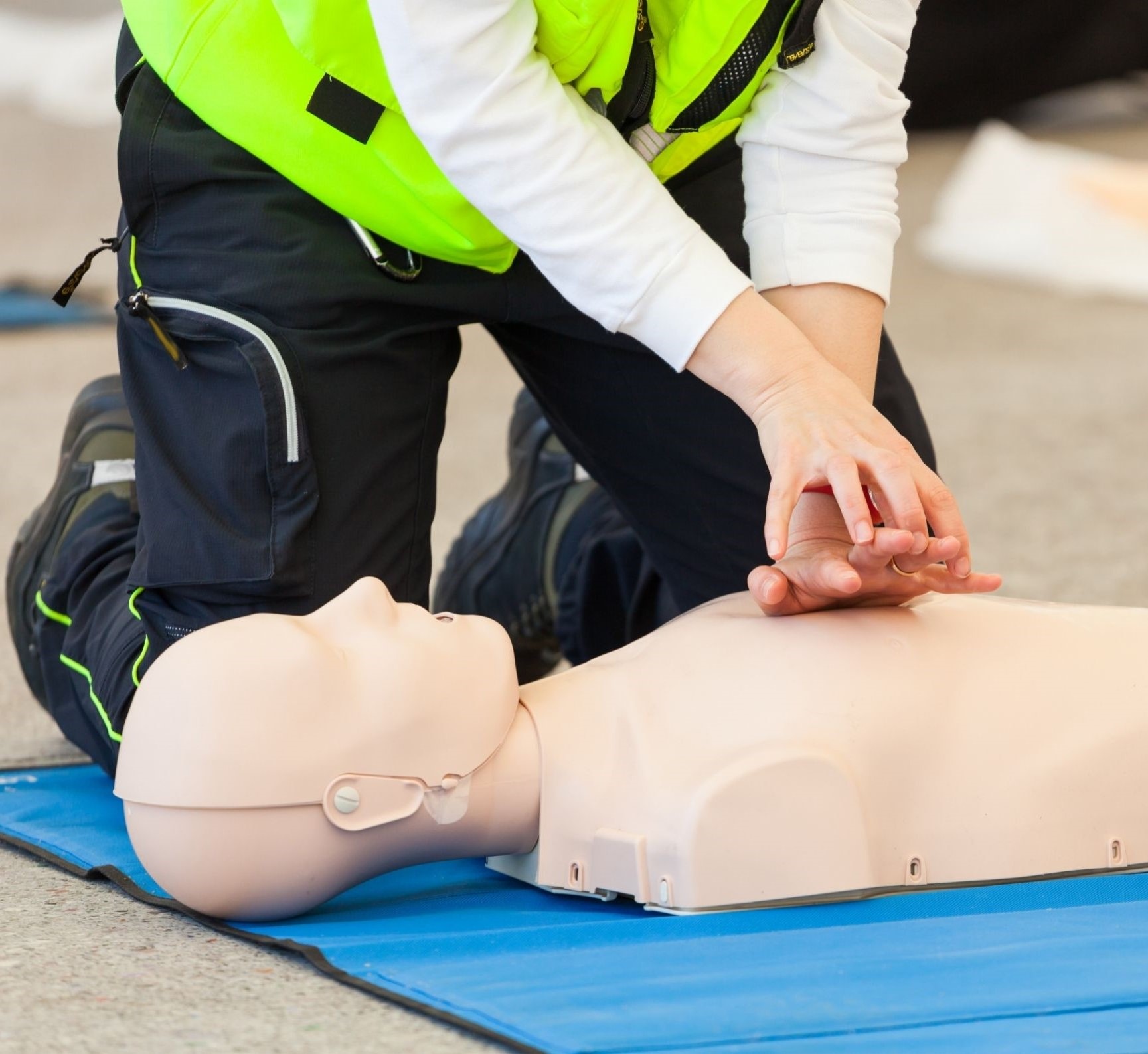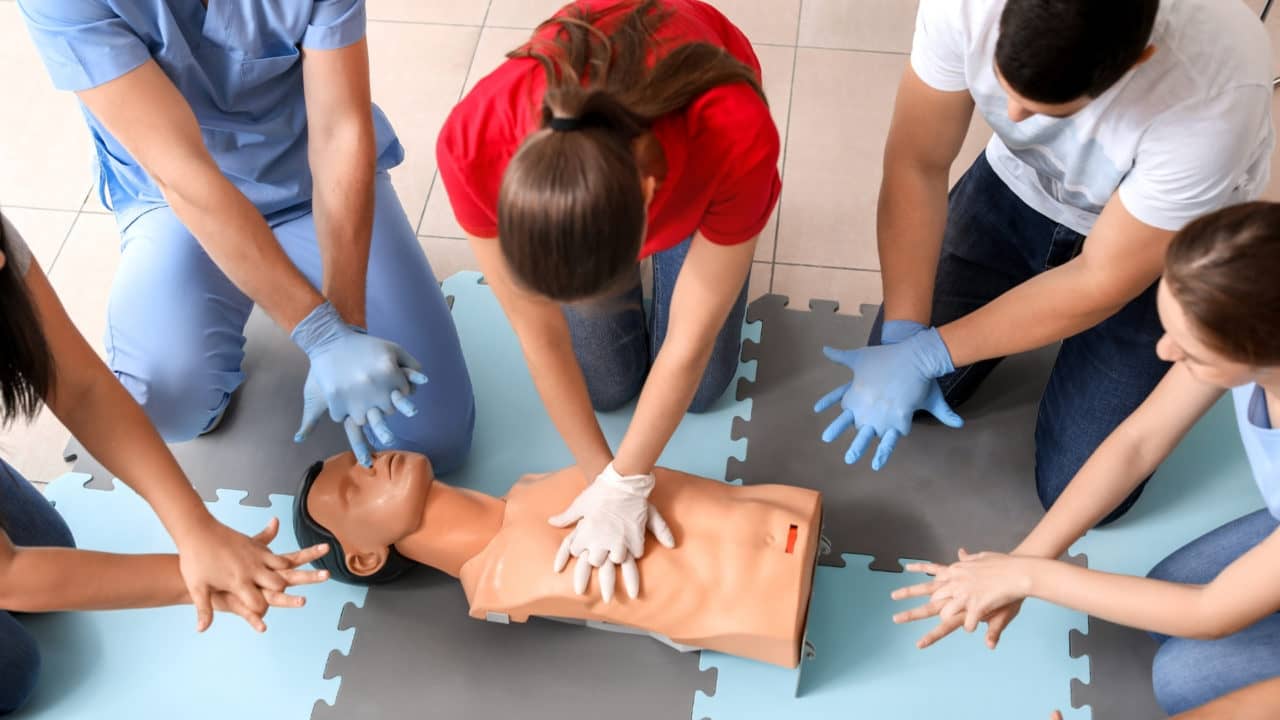Introduction
Cardiopulmonary resuscitation (MOUTH-TO-MOUTH RESUSCITATION) is a lifesaving strategy that everyone should understand. However, regardless of its essential significance, many misunderstandings border CPR methods and accreditation. Many individuals may wait to obtain accredited as a result of these misunderstandings, which can inevitably set you back lives in emergency first aid Salisbury emergency situation situations. This post intends to disprove common myths concerning mouth-to-mouth resuscitation while highlighting the relevance of obtaining accredited with recognized first aid courses By comprehending the truths, you can encourage yourself and potentially conserve a life.

Common Mistaken beliefs About CPR and Why You Must Get Certified
What Is CPR? Comprehending the Basics
CPR stands Caboolture First Aid Course Near Me for cardiopulmonary resuscitation, a treatment designed to recover breathing and blood circulation in an individual that has quit breathing or whose heart has actually ceased beating. The strategy entails breast compressions incorporated with fabricated ventilation strategies such as mouth-to-mouth breathing or using a bag-mask device.
- Key Components of CPR: Chest Compressions: These aid maintain blood flow to crucial organs. Rescue Breaths: These give oxygen to the lungs. Automated Outside Defibrillator (AED): A device that can surprise the heart back into rhythm in situation of specific heart arrests.
Misconception 1: Only Physician Can Do CPR
One usual misconception is that just qualified medical professionals can carry out mouth-to-mouth resuscitation effectively. While healthcare providers are definitely competent at it, anybody can find out exactly how to carry out mouth-to-mouth resuscitation with CPR courses
- The Fact: Laypersons can be trained to administer effective CPR. Basic strategies are straightforward and can be mastered by any person ready to learn. Bystanders typically play critical roles in saving lives prior to professional help arrives.
Misconception 2: mouth-to-mouth resuscitation Is Just Useful for Cardiac Arrest Victims
Another widespread misunderstanding is that CPR is entirely for people experiencing cardiac arrest. Actually, CPR can be helpful in various emergencies.
- Other Circumstances Where mouth-to-mouth resuscitation Serves: Drowning incidents Drug overdoses Choking victims where the airway has been compromised
Misconception 3: You Need To Prevent Giving Rescue Breaths
Many individuals believe rescue breaths are unneeded or even unsafe because of the threat of infection or other issues. This stems from complication about exactly how COVID-19 might impact these practices.
- The Facts: Rescue breaths are necessary for offering oxygen. During circumstances like drowning or opioid overdose, rescue breaths become crucial. Hands-only CPR is suggested when someone is untrained or hesitant however understanding both strategies continues to be vital.
Misconception 4: You Can Not Hurt Somebody by Doing Mouth-to-mouth Resuscitation Incorrectly
While it's true that executing CPR inaccurately might create some injury, not attempting it whatsoever may lead to fatality.
- Understanding the Risks: Rib fractures may occur during aggressive upper body compressions. Any activity taken is better than doing nothing; modern-day standards emphasize that "something" is much much better than "nothing" throughout cardiac arrest situations.
Misconception 5: As soon as You're Trained, You Don't Need More Training
Some people believe that as soon as they have actually finished a training course, they don't require additional training or recertification.

- Why Recurring Training Issues: Techniques progress with time based on new research. Regular refreshers keep your skills sharp and guarantee you're updated with present ideal practices.
Misconception 6: Kid Don't Need CPR Training
Parents typically presume they won't need to carry out CPR on their kids since children do not experience heart occasions as regularly as adults do.
- The Fact for Moms and dads: Children can experience respiratory system concerns, choking cases, or drowning scenarios calling for immediate attention. Learning pediatric-specific techniques makes certain readiness during emergencies involving children.
Importance of Obtaining Certified in First Aid and CPR Courses
Why Accreditation Issues in Emergency Situation Situations
Being accredited in emergency treatment and CPR gives several benefits beyond just discovering life-saving skills:
- Enhances confidence when encountering emergencies Increases recognition of safety protocols Encourages more people to advance in emergency situation circumstances
Benefits of Taking an Emergency Treatment Course
Comprehensive Capability: Individuals discover not almost mouth-to-mouth resuscitation yet also fundamental emergency treatment concepts such as injury treatment and managing fractures. Legal Security: Accreditation usually includes Good Samaritan legislations protection when helping someone throughout an emergency. Career Opportunities: Many jobs need emergency treatment qualification as part of their safety and security methods; being certified improves employability in areas like teaching, training, healthcare, and childcare.FAQs Concerning Common Misconceptions Pertaining To CPR
FAQ 1: What sort of training do I need for efficient CPR?
You must enroll in acknowledged CPR courses that cover both grown-up and youngster resuscitation techniques effectively.
FAQ 2: Exactly how typically should I restore my emergency treatment certificate?
It's a good idea to restore your first help certificate every 2 years since standards change frequently based upon arising research.
FAQ 3: Is hands-only compression much better than standard CPR?
For inexperienced onlookers or those uneasy providing rescue breaths, hands-only compression is effective yet recognizing both methods supplies a greater opportunity of survival if educated properly.
FAQ 4: What sources are offered for finding out about very first aid?
Numerous companies use online sources along with physical training courses; trustworthy systems include the American Heart Association and Red Cross internet sites which information first help courses CPR Course Hobart available near you.
FAQ 5: Exist any type of age restrictions on taking an emergency treatment course?
Most first aid courses welcome participants of any ages; nonetheless, some specialized classes might be tailored toward particular age (e.g., children vs adults).

FAQ 6: Does my work environment require me to obtain certified?
Certain work environments-- especially those entailing public interaction-- typically call for workers to have legitimate certifications in emergency treatment and standard life support (BLS).
Conclusion
Understanding the reality behind usual misunderstandings about mouth-to-mouth resuscitation is critical for enhancing understanding regarding this life-saving technique. Whether you're a parent wanting to protect your kid or a worker looking for accreditation for professional advancement, getting accredited through appropriate first aid courses arms you with the understanding needed for acting decisively throughout emergencies. Remember-- any person can find out exactly how to do reliable CPR regardless of history; don't let misconceptions hinder you from coming to be empowered! So why wait? Join today for a CPR course!
This comprehensive overview looks for not only to resolve misconceptions bordering CPCR however additionally serves as a support for everybody to look for accreditation so they too can contribute favorably during emergencies!